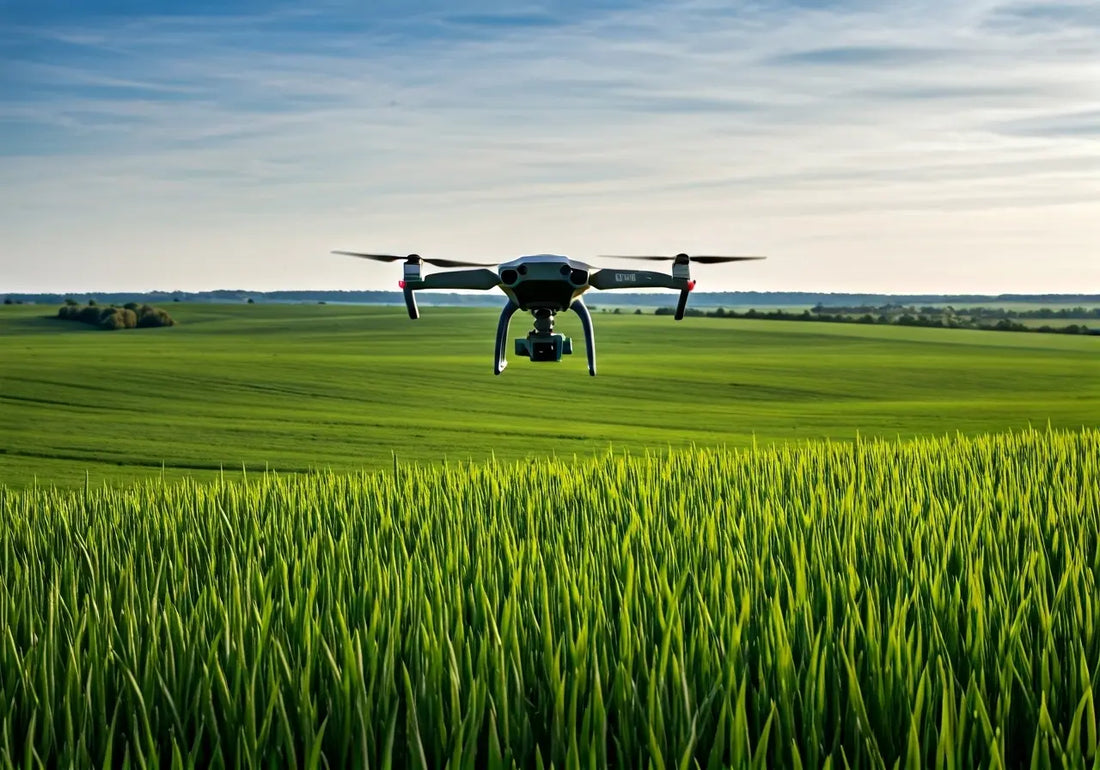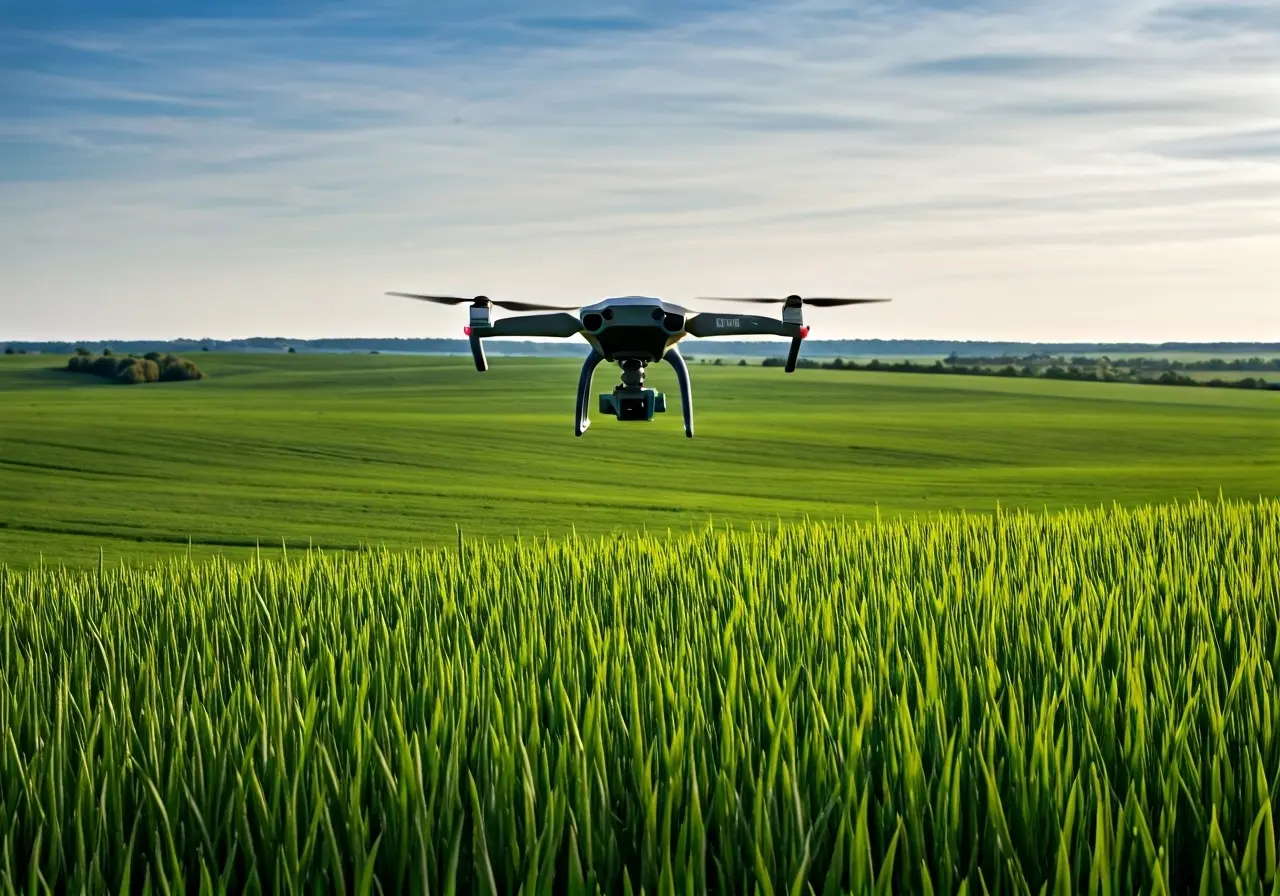
12 Essential Agras Drone Accessories for Maximized Farm Efficiency
Share
Maximizing farm efficiency is crucial for modern agriculture, and Agras drones have become indispensable tools in achieving this goal. However, to truly unlock their potential, investing in the right accessories is key. Let’s dive into the essential add-ons that can significantly enhance your drone operations.
1. Extended Flight Time with Extra Batteries
Extra batteries are a must-have to ensure that your Agras drone can cover large fields without frequent breaks. This continuity helps maintain efficiency and saves valuable time. Investing in high-capacity batteries guarantees extended flight times, allowing for comprehensive coverage of larger areas in a single flight. This is especially crucial in periods of intensive farming operations, such as during sowing or harvest seasons.
Besides simply extending the duration of flights, extra batteries offer peace of mind. In scenarios where power outages or other unexpected issues arise, having additional batteries can be a lifesaver. They provide the flexibility to swap out power sources quickly and continue operations, thus reducing downtime and increasing productivity across your farm operations.
2. Precision with GPS and Mapping Tools
Integrating GPS and mapping tools allows for pinpoint accuracy in planning and executing drone flights, leading to better crop management and precise application of resources. High-precision GPS modules are indispensable for farmers aiming for optimal land use. By accurately mapping out field boundaries, you can ensure that resources like seeds and fertilizers are precisely distributed, reducing waste and minimizing environmental impact.
Moreover, advanced mapping tools can facilitate detailed analysis of your land. This data acquisition enables you to identify variations in topography, soil health, and crop performance, paving the way for more informed, strategic farming decisions. It is this blend of technology and agriculture that allows for a more sustainable future.
3. Enhanced Security with Protective Cases
Durable protective cases shield your drones from potential damage during transport or in rough weather conditions, ensuring they stay in top working condition. Protection goes beyond mere physical safety; it extends to preserving the sensitive technologies that power these drones. With robust construction, quality cases are designed to withstand impact and resist weather variations, contributing significantly to the drone’s longevity.
Using such protective gear can also mitigate the risks associated with unforeseen circumstances, like dust storms or sudden downpours. Consequently, having protective cases is not just a matter of security but of ensuring operational readiness at all times. With every flight, your drone remains safeguarded, ready for the next mission, and therefore, helping keep farm productivity on track without interruptions.
4. Boost Efficiency with High-Quality Propellers
Upgrading to high-quality propellers can improve flight performance and stability, which is essential for maintaining consistent operation over expansive fields. By providing a more aerodynamic design and robust materials, these propellers enhance lift and maneuverability. Increased efficiency in air-cutting capabilities can lead to smoother flights even in challenging conditions, enabling the drone to cover more ground efficiently and reliably.
The added benefits of advanced propellers are seen in fuel economy, lessening the load on batteries, and thereby extending the total flight durations. Farmers find themselves making fewer trips to the field, saving both time and resources. Moreover, these propellers’ noise reduction features contribute to less disruption in the farm ecosystem, ensuring that the livestock and natural wildlife remain undisturbed during operations.
5. Remote Monitoring via Advanced Controllers
Advanced controllers enhance the ease of operating your drones with features like real-time monitoring and longer connectivity ranges, making farm management more convenient. By integrating sophisticated control technology, these controllers enable seamless operation, integrating live data feed options, thus giving farmers up-to-the-minute information on drone status and flight paths.
Incorporating upgraded controllers can also greatly improve user experience. Features such as ergonomic design and intuitive user interfaces make handling the drones more accessible even for those less familiar with high-tech gadgets. With additional programming options for automated flight paths and task execution, these controllers transform the routine task of farming into a smart operation, significantly enhancing labor productivity and farm oversight.
6. Streamline Data Collection with Sensors
Various sensors offer valuable data collection, from detecting soil moisture levels to assessing crop health, enabling informed decision-making and research. These sensors are vital in providing critical insights into microclimates within different parts of the field. Equipped with capabilities like multispectral imaging, they go beyond basic health checks by capturing nuanced data that informs strategic farming practices.
The ability to consistently monitor variables such as hydrations levels, nutrient density, and pest presence helps farmers promptly address issues before they escalate. Integrating these sensors enables precision farming practices that boost yields and minimize environmental impacts by targeting inputs to specific areas hence optimizing resource usage.
7. Effortless Operation through Mobile Apps
Mobile apps provide an intuitive interface to manage and configure your drone’s settings directly from your smartphone, ensuring ease of use and accessibility. These applications are designed not only for controlling the drone in flight but also for analyzing data, scheduling maintenance, and customizing flight plans.
The versatility demonstrated by these apps allows for real-time monitoring and modification of drone operations remotely. With hands-on connectivity, a farmer can swiftly respond to any unforeseen situations, issue commands, or retrieve data without being physically present, turning their smartphone into a comprehensive farming tool. Empowering agricultural professionals with technology is a game-changer in the evolving landscape of modern farming.
8. Obstacle Detection with Lidar Technology
Lidar technology enhances obstacle detection, reducing the risk of accidents and ensuring that your drone can safely navigate complex environments. Operating with precision even in low visibility, Lidar systems construct 3D maps of their surroundings in real-time, allowing drones to maneuver through densely planted fields and rugged terrains without crashing.
By enabling drones to autonomously detect and avoid obstacles, Lidar technology minimizes the need for constant human intervention, freeing up labor for other crucial farm tasks. Moreover, it supports reliable night operations and flights in less-than-ideal weather conditions, further expanding the drone’s functional capabilities and ensuring uninterrupted farm operations.
9. Optimize Accuracy with Calibration Tools
Regular calibration keeps your drone’s instruments accurate and reliable, which is crucial for achieving precise operations. Calibration tools are indispensable in maintaining the accuracy of your drones as they ensure the sensors measure and record data effectively, which is vital for practical farm management.
By ensuring instruments are rigorously calibrated, you can rely on the precision of collected data, resulting in higher confidence in decision-making processes, boosting overall farm efficiency. Calibration may seem technical, but modern tools simplify the process, incorporating user-friendly instructions and interfaces, ensuring that accurate calibration does not lag behind your need for timely and precise data.
10. Increase Crop Yield with Fertilizer Spreaders
Attaching fertilizer spreaders to your drone allows for even and efficient distribution of nutrients across your fields, promoting better crop yields. This targeted application not only optimizes fertilizer use but also ensures that the plants receive the precise amount they need to thrive without overburdening the soil.
The precision offered by drone-mounted spreaders reduces wastage and aligns with sustainable farming practices. This facilitates a more equitable spread in less time than conventional methods, allowing farmers to focus on other tasks, further boosting efficiency. Integrating drone technology with traditional farming practices is a strategic move toward the future of agriculture.
11. Weatherproofing for All-Season Use
Weatherproofing accessories, such as covers and rain shields, ensure that your drones can operate effectively in diverse weather conditions without risk of damage. High-quality seals and covers protect sensitive electronic components from moisture and dust infiltration, keeping your equipment in peak operating condition regardless of seasonal challenges.
Both amateur and professional farmers benefit from investing in these protective measures, making sure that drones remain reliable tools throughout the year. Such preparation safeguards against unexpected weather changes, allowing uninterrupted productivity and ensuring that your agricultural investments yield the best possible returns regardless of the environmental strains.
12. Improved Night Operations with LED Lights
LED lights extend drone usability into night hours by improving visibility, allowing for safe and efficient farming operations regardless of daylight. These lights illuminate invisible markers and boundaries clearly, enhancing the accuracy of nighttime applications such as pest surveillance, crop monitoring, and security patrols.
With adjustable brightness and color settings, LED integrations offer customizable lighting solutions tailored to specific operational needs. Consequently, extending work hours into the night opens new dimensions of productivity and flexibility, especially during critical growth periods where every minute counts.

